How to grow soybeans – discover the benefits of growing these high-protein legumes
Find out how to grow soybeans and delight in nutty, buttery legumes that are nutrient-rich, easy to care for, and great for other crops

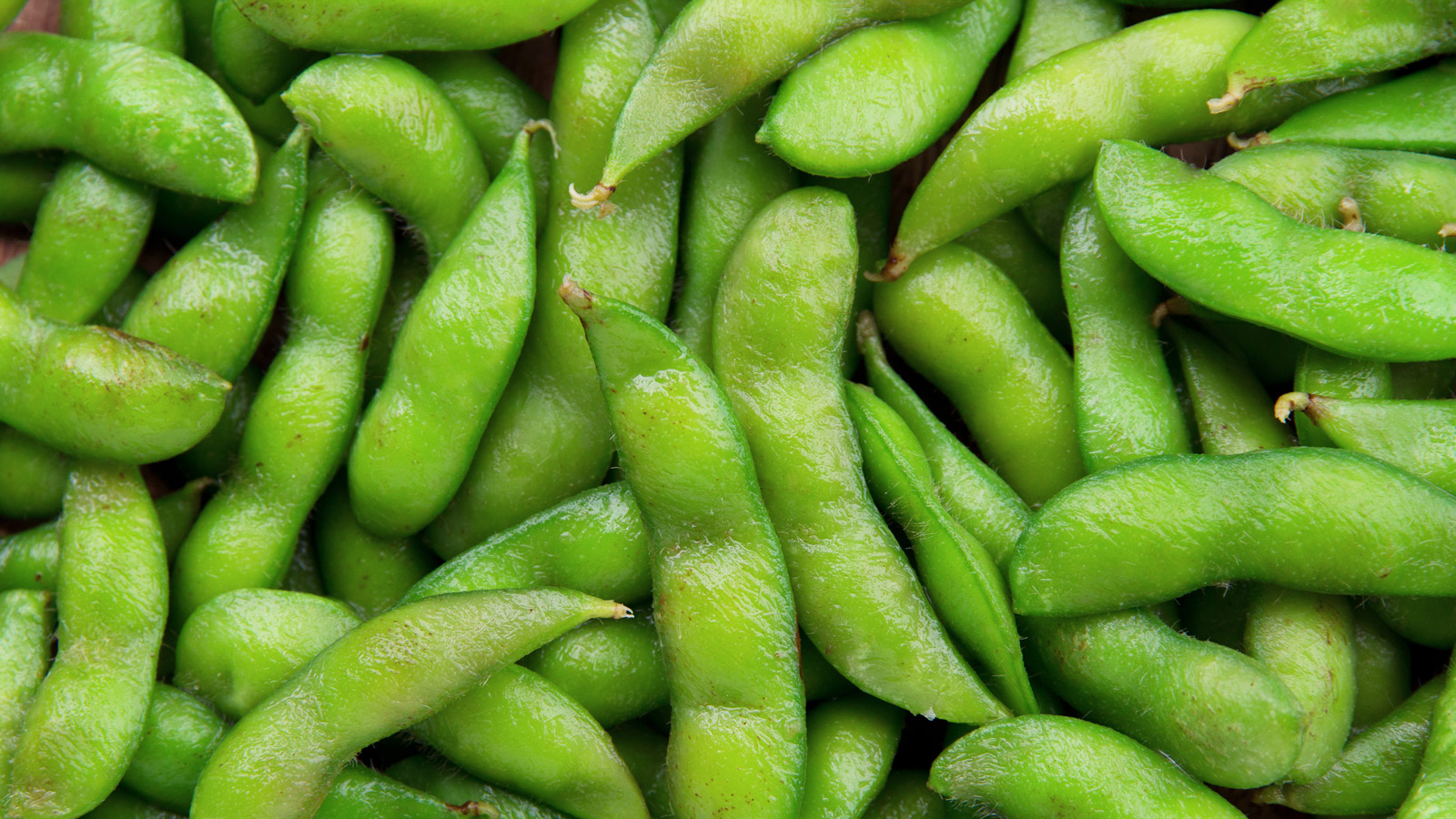
Knowing how to grow soybeans is your ticket to cultivating the most intriguing-tasting beans in the legume lexicon. Nutty, buttery, sweet and salty, they present you with an opportunity to discover arguably the most intense, protein-rich parcels of flavor you can enjoy in the vegetable garden – prolific, tender, unusual yet also unassuming.
Packed with iron, calcium, fiber, A and B vitamins, plus magnesium and manganese, the quirkily christened ‘hairy pod bean’ (Glycine max) brings a dash of international superfood stardom to your cropping exploits. And the best news of all is how easy they are to grow.
Widely recognized as one of the kings of the ‘superfood’ family, the soybean makes a compelling protein alternative for those seeking to eschew traditional meat and dairy diets. Cultivated for centuries in Far East Asia and formerly grown as a plant that selflessly fixes nitrogen in the ground for other crops, this nutritious podding marvel requires little in the way of basic attention, skill and key requirements. All you really need is plenty of sunshine, a long summer of growth, generous hydration and a healthy appetite. So if you’re in search of a tasty staple that delivers months of satisfying harvests, look no further.
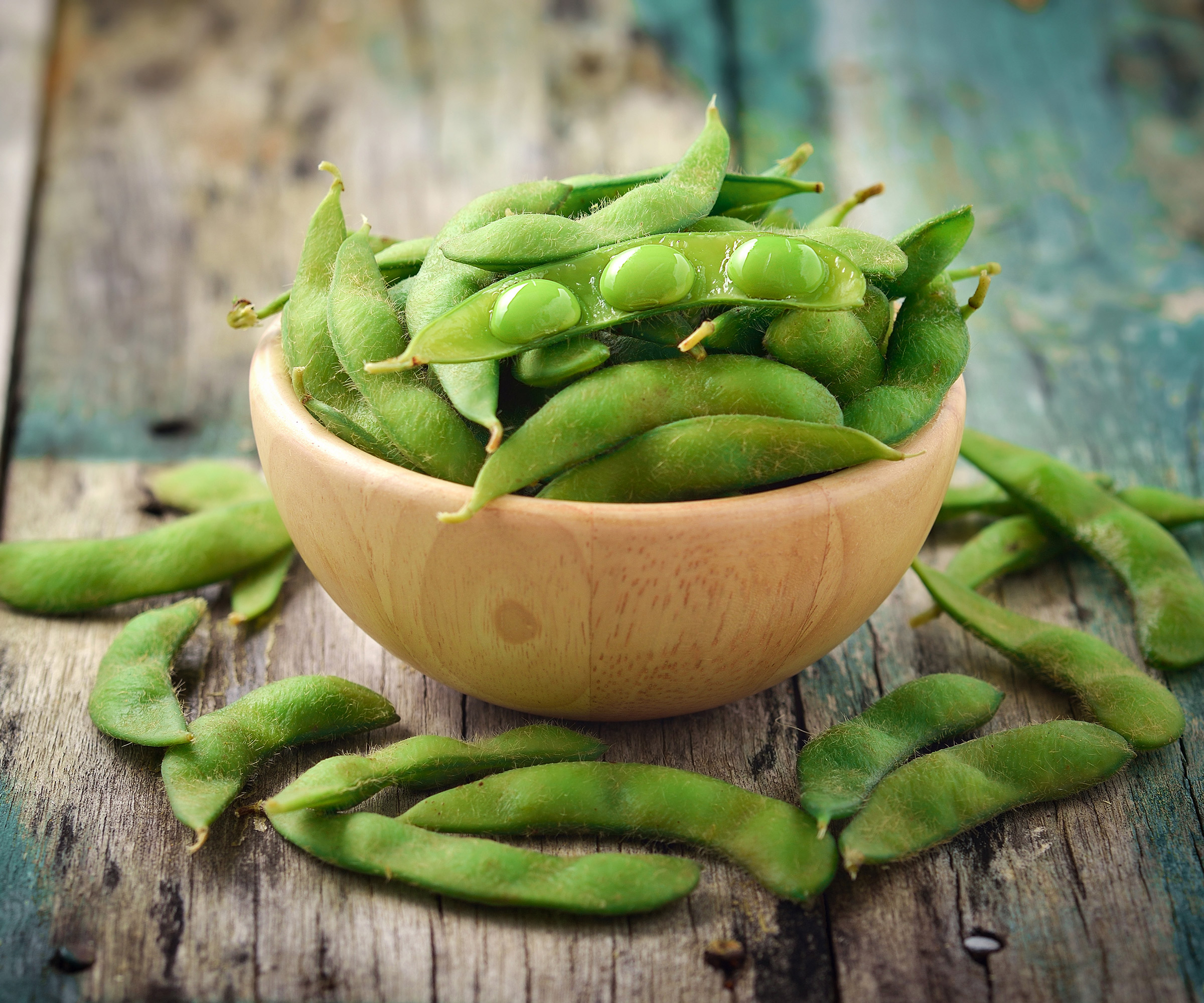
Soybeans are the most protein-packed legumes you can grow
Ideal conditions for growing soybeans
The versatility of the soybean makes it one of the most desirable crops for home-growing. As Nikhil Arora, co-founder of Back to the Roots points out, they can be boiled or steamed, used to make tofu and even processed to make milk. ‘Soybeans have been grown for thousands of years for their dense nutrition, being low in saturated fats and cholesterol free,’ says Nikhil.
For bean lovers who already know how to grow French beans, the best thing about learning growing soybeans is that there are no fancy new tricks or techniques required. What’s more, they are adaptable to varied parts of the plot, from modest patio planting spots and vegetable borders to dedicated raised bed gardens and allotment patches.
There are just a few essentials to consider when deciding where to grow soybeans. Make sure the spot you choose is warm, sheltered and will receive at least eight hours of full sunshine a day. Unlike runner beans, soybeans are relatively compact and low growing bush plants, reaching 3-5ft when fully mature, so you don’t have to free up loads of space – however, it’s a good idea to allow a little extra space for easier access to pods. And obviously, if you are growing multiple plants or contemplating successional sowing, factor that into location choice.
When growing soybeans, the soil needs to be well-draining, loose and fertile. These beans will struggle in heavy, claggy or water-logged soils. Ideally, your soil pH should also be 6-6.5. Make sure you are familiar with your plot’s soil types and make adjustments where necessary prior to sowing. Add sand to more compact compositions, or an organic mulch to liberate clay-based soils. Soybeans are fairly tolerant of poor soil, but do much better with a fertile base. It’s a good idea to add some aged compost to your planting site about a month before sowing.
There are thousands of soybean cultivars available, though many are bred specifically for commercial or farming use. Seeds come in all kinds of colors, with green-seed options believed to be the most tender and black seed varieties excellent for drying. Check the packet for instructions on which are best suited to your plot.
Design expertise in your inbox – from inspiring decorating ideas and beautiful celebrity homes to practical gardening advice and shopping round-ups.

Grow soybeans in a sunny, sheltered spot that has access to at least eight hours of sunshine per day
When and how to grow soybeans
One of the most important lessons to learn is that these tender legumes are not frost-hardy. Furthermore, they are not the quickest to mature. Any planting and sowing intentions must factor this in, along with a reasonable understanding of how your local climate will impact growth rates. These cropping annuals thrive in USDA hardiness zones 2-11 and flourish in constant temperatures around 70-85˚F. However, some varieties have been bred to withstand more moderate temperatures, so check seed packets carefully.
Beans need long, hot seasons giving plenty of time both for pods to develop and for the highest yields. The decision about when to plant vegetables is determined by the benefits of ensuring the longest ripening season you can, while avoiding the risk of late frosts in spring. ‘Be conscious of your local weather patterns and plant after the last frost date,’ says Back to the Roots’ Nikhil Arora. As a general rule, sow direct from May to June for late summer harvests. However, you can start a little earlier if your local climate is mild and you wish to extend the growing season. If direct-sowing, protect plants from frost by starting under cloches, polytunnels or cold frames. Where possible, soybeans prefer to be sown in their final planting positions as their root systems are delicate.
As West Coast Seeds’ expert gardener Rebecca Boyar points out, soil temperature is also a key factor in guaranteeing germination and happier plants. ‘Soybean seeds are slow to germinate and will rot in the ground if the soil is too cool and damp,’ she explains. ‘Soybean seeds require the first five inches of soil to be 65-70˚F for successful germination.’ You may find it helps to pre-warm the soil with a cloche or dark plastic sheet. Ideally, you want as many days of sunshine as possible in the first three months of growth, so plants are at their strongest when they start to flower and eventually set pods. Don’t forget to keep sowing every two-three weeks to boost your chances of a more prolific yield.
You can grow soybeans that mature quicker, as Homes & Gardens expert Lucy Chamberlain points out. This may help shave off a few weeks if you are worried about the amount of sunshine you’ll get. ‘Varieties such as ‘Summer Shell’ mature more quickly,’ says Lucy. ‘However, a long growing season is still required, so sow as early as you can.’
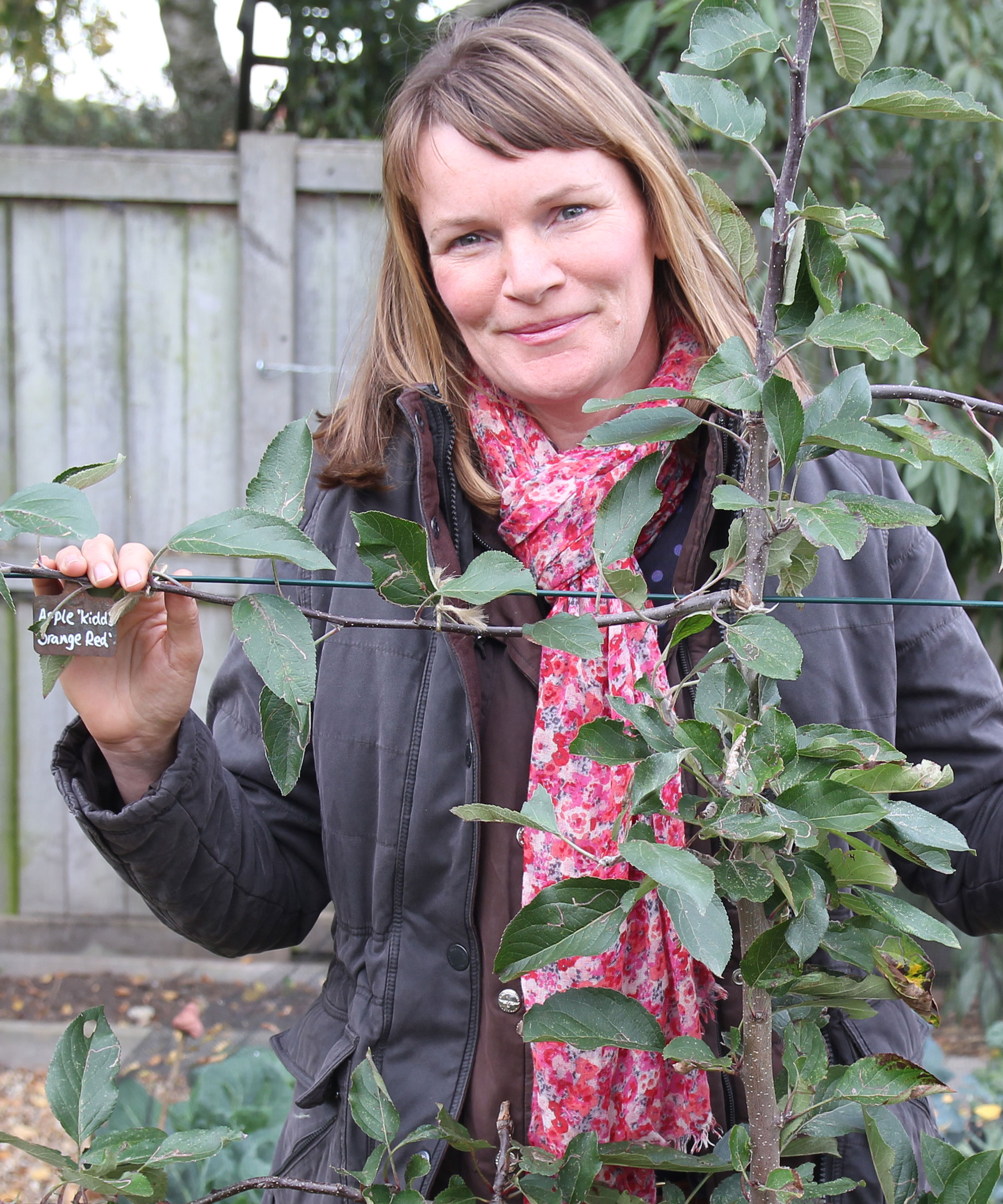
Lucy was a Horticultural Advisor at RHS Wisley and has been Head Gardener on a 100-acre estate in England for many years, but writes regularly for titles such as The Garden, Gardeners’ World, The Guardian and Amateur Gardening. She’s also the author of RHS Step by Step Veg Patch, which covers 50 types of fruit and veg. She suggests starting your soybeans under glass to give as long as possible to develop and crop.
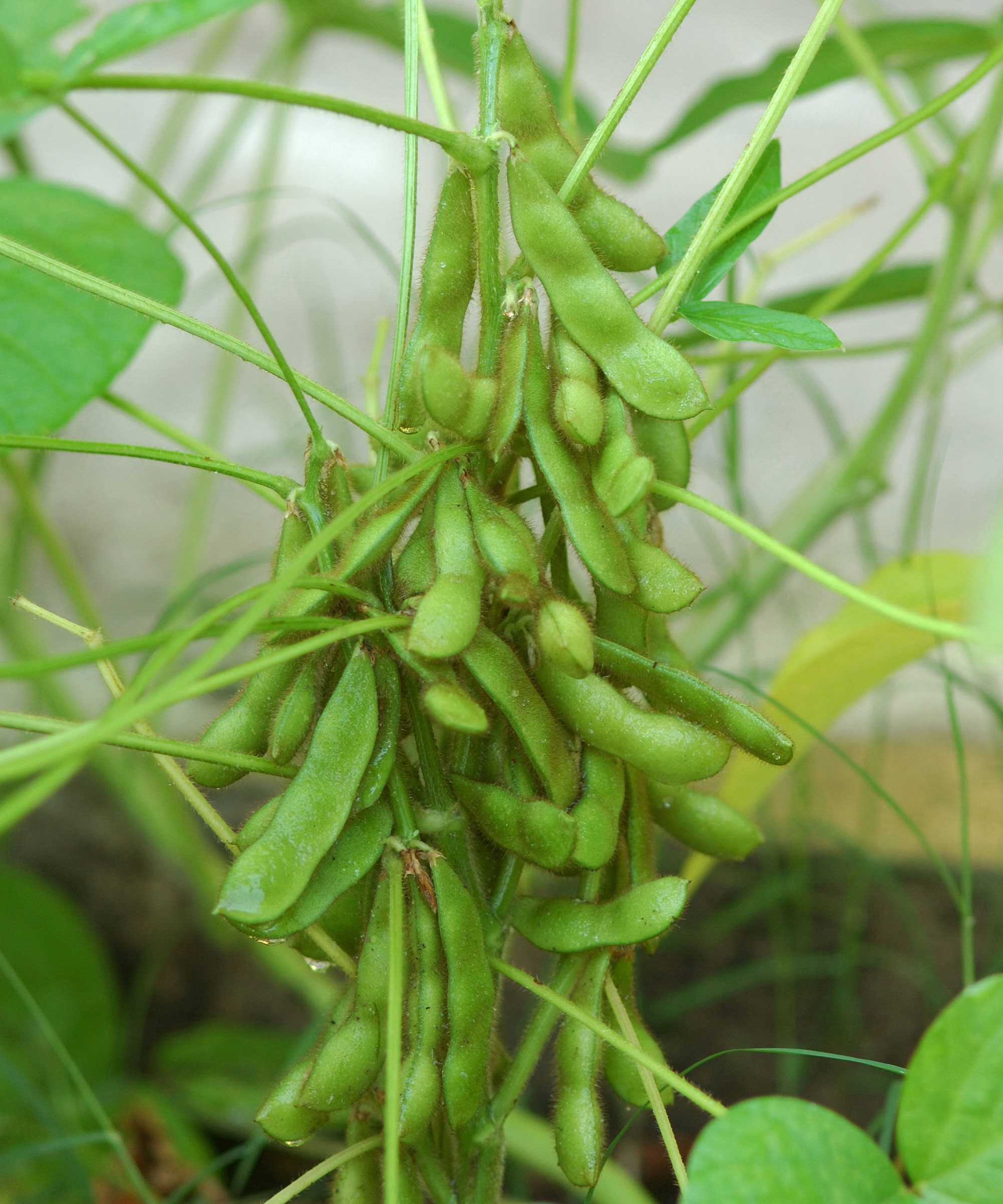
Soybeans need long, hot summers for pods to fully mature
How to plant soybeans from seed
Whether you are sowing direct (in situ) or planting out seedlings that were started inside, preparing garden soil will help your soybeans develop stronger root systems and encourage bushier foliage and healthier pod sets.
As we have explained, soybeans are not particularly fast-growing vegetables, but a fertile base will expedite flowering and cropping. Before sowing or planting your beans, dig the soil well (or deploy a rotavator) and make sure the earth is crumbly, loose and well draining. It’s good to do this a few weeks before sowing or planting. If you have added a little aged, well-rotted compost or a slow-release general-purpose granular feed, you are all set for growing soybeans.
When learning how to grow soybeans, one last golden rule advocated by Rebecca Boyar is this: do not pre-soak seeds. Again, it is possible to start underglass in pots and then transplant seedlings out when it is warm. However, here we are showing you how to sow direct:
- Sow soybean seeds around an inch deep and spaced a couple of inches apart. Germination can take one-two weeks, depending on variety, soil conditions and climate. Nikhil Arora advises not planting seeds more than 2in deep, or plants won’t grow as well and you’ll lose a lot of yield.
- Water in well after sowing, but try to avoid watering too much before germination occurs. As long as the soil or compost is moist, that is all you need. If there is still any risk of erratic or extreme cold snaps, cover your sowings with a cloche, cold frame or polytunnel.
- Once soybean seedlings are a few inches high, you can thin to the strongest, making sure that plants are spaced 4-6in apart. However, don’t thin by pulling out the weakest seedlings. Instead, snip close to the soil or compost level so that you don’t disturb the roots.
- Keep sowing every three weeks. Successional sowing until early July will give you a good chance of seeing crops until the first winter frosts.
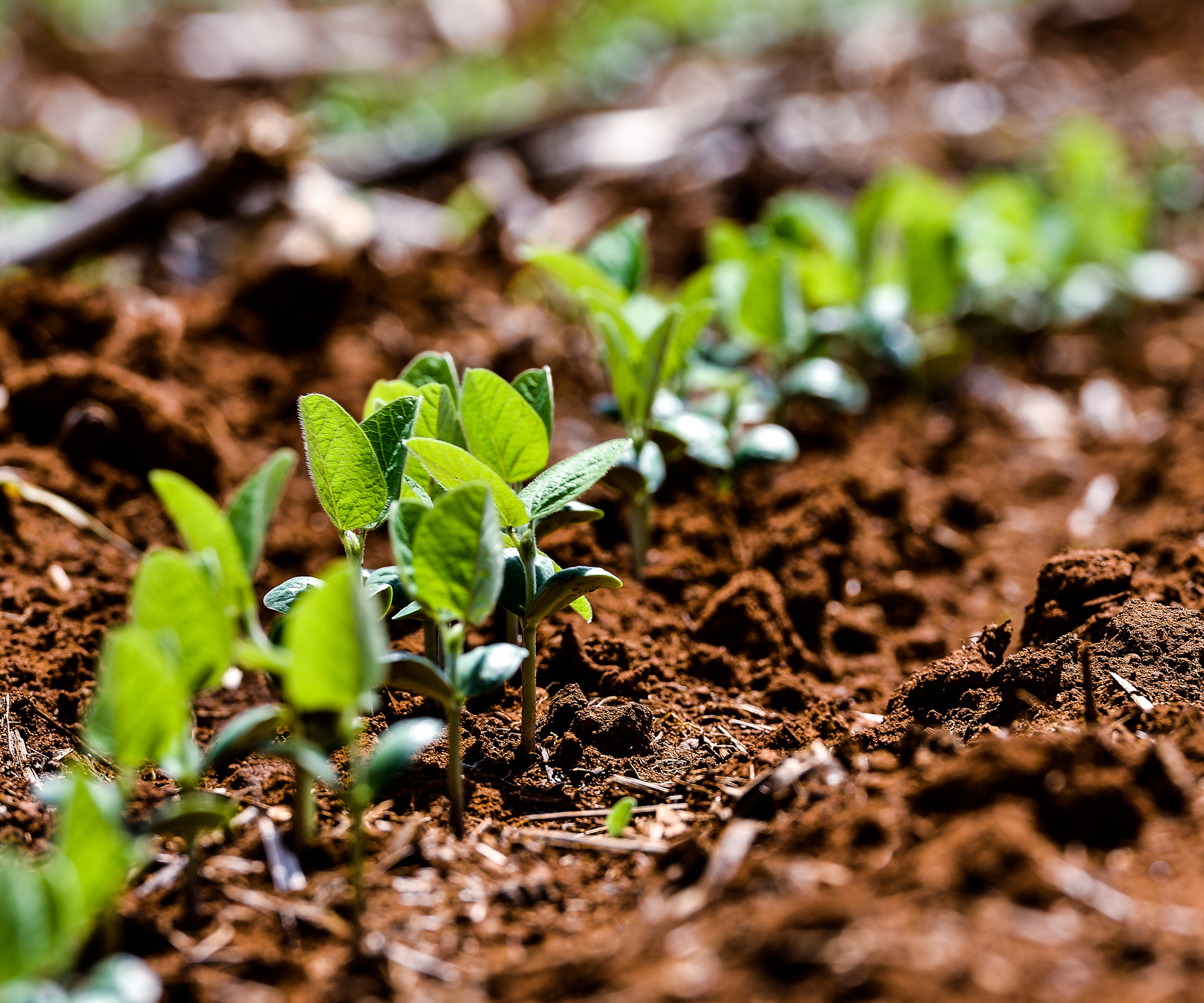
Sow soybean seeds a couple of inches apart and thin once they are a few inches high
Soybean care tips
Once planted, you’ll find it's relatively straightforward to grow soybeans. The main cultivation task is to hydrate regularly and deeply. Figuring out when to water plants is not an exact science and it is something you will need to adapt, depending on temperature peaks and anomalies, and your bean variety. But as a general rule, you should be stepping up your watering regime after the first month to six weeks.
‘Soybeans require much more water once their flowers come in,’ says Nikhil Arora. ‘At this point, double the amount of water you were giving your plants before the flowers came in.’ If unsure, press your finger into the soil or compost – if dry, it’s time for a top-up. Remember to water around the bases of the plants to avoid foliar diseases. You can reduce watering once pods are filled out and leaves start changing color.
As long as you added some nourishment when planting, you shouldn’t need to keep topping up feeding as soybeans develop, apart from maybe a little aged compost mid-season. If you do add the odd feed, make sure that it is a slow-release one. Also, make sure it isn’t nitrogen-heavy, as this can result in excessive leaf growth at the expense of root growth and crops. A good mulching once the ground is warm enough will help lock in soil moisture and will also help prevent weeds. If you do have to weed, hand-weed gently around plants so as not to disturb soybean roots.
Unlike other types of beans, you will find you can grow soybeans without having to rely on stakes. Well-spaced plants naturally support each other thanks to their bushy habit. Just make sure there is ample room around plants for healthy air flow and light to reach the plants (and for easier harvesting). Lovers of companion planting will find they can boost the health of their soybeans by growing near sweetcorn, squash, cucumbers and potatoes, as well as marigolds and strawberries.
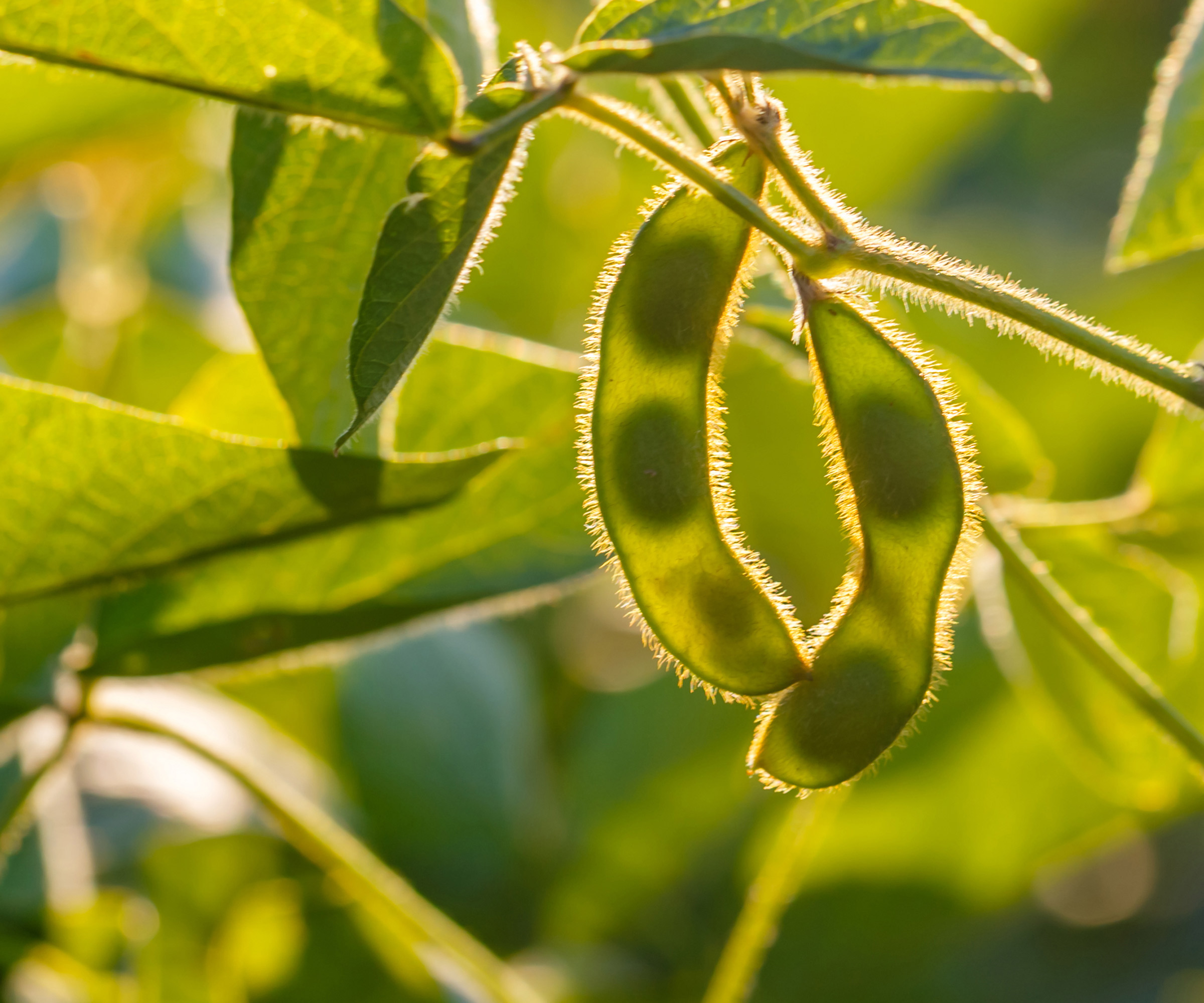
Once you see pods forming, you should step up your watering regime to ensure the healthiest crops
Problems growing soybeans and how to tackle them
One of the benefits of growing soybeans is that you are not likely to have to worry about too many pests and diseases. The disclaimer here is following good practice when planting and protecting crops. If you take steps to make sure plants are well hydrated, ventilated and mulched, you can reduce the risks considerably.
There are just a few pests to be aware of. The most likely pests will be aphids, and a likely telltale sign is premature discoloration of foliage. You can get rid of aphids by encouraging ladybugs and lacewings, and by growing companion plants like dill and fennel nearby, which attract these beneficial predators. You can also apply short bursts of water on leaves every other day or by spraying with mild soap or horticultural oil.
If you become aware that pods are dropping prematurely from plants, this could be a sign of underwatering or overwatering. It could also be a sign of stress due to very hot weather. Take preventative steps to alleviate the risk of this happening.
Soybeans are also attractive to the likes of rabbits, birds and deer. Horticultural mesh or fine netting draped over cages or poles surrounding your soybeans will keep animals at a safe distance. Just remember to ensure that any netting is well secured and taut so that passing creatures don’t get tangled in its depths.
Growing soybeans can also leave crops open to one of the following infections and diseases. Here’s how to combat the main types:
- Bean mosaic virus: Tell-tale signs are yellow patches on leaves and stunted growth. There’s not a lot you can do to save plants that have it – but keep an eye out for bean varieties with natural resistance.
- White mold: Denoted by cotton-like growths. Caused by the fungus Sclerotinia sclerotiorum and happens when plants aren’t well spaced or if soybeans are planted where you previously grew other legumes.
- Bacterial blight: One big giveaway of this problem will be premature yellow or brown leaves. It tends to cause issues where plants have sustained some sort of wound or damage so check them over regularly. Keeping plants well ventilated and watering properly will reduce risks.
- Fungal infections: Watch out for white spotting on leaves. Fungal infections happen if the weather is very damp for long periods. Prune any foliage that might be touching the ground to avoid rain splash.

While they look a little strange, soybean pods are meant to be hairy and are a sign of perfect health
Harvesting soybeans
If you have followed the sowing and planting instructions methodically, you should find that crops are ripening and ready for harvesting in late August or early September. It generally takes around three months for plants (and pods) to fully mature, depending on variety and sowing times. Ripe pods tend to be between 2-3in long and present with neatly defined ridges and bulges. The pods should be a bright green color (don’t wait for them to change to yellow, as this will likely mean a downgrading of flavor). If you already have experience of knowing when to pick green beans you can easily develop an instinct for knowing when to harvest – although there are a couple of ways to remove the pods.
First, you can remove the pods by cutting at the stems with secateurs or shears. Be sure to keep harvesting every couple of days. Second, if you prefer, you can just cut and lift the entire plant, then hang it upside down in an airy place to dry out.
Cook in pods, or shell first. Store any unused beans in an airtight container in a cool, dark place, or keep in the fridge for a week. After harvesting, compost leftover plants but leave roots in the ground. Soybeans, like other legumes, are nitrogen-fixing and good for the earth. West Coast Seeds’ Rebecca Boyar suggests tilling the remains into the soil at the end of the growing season. By letting nature take its course, you are doing your bit to nourish future crops for free!
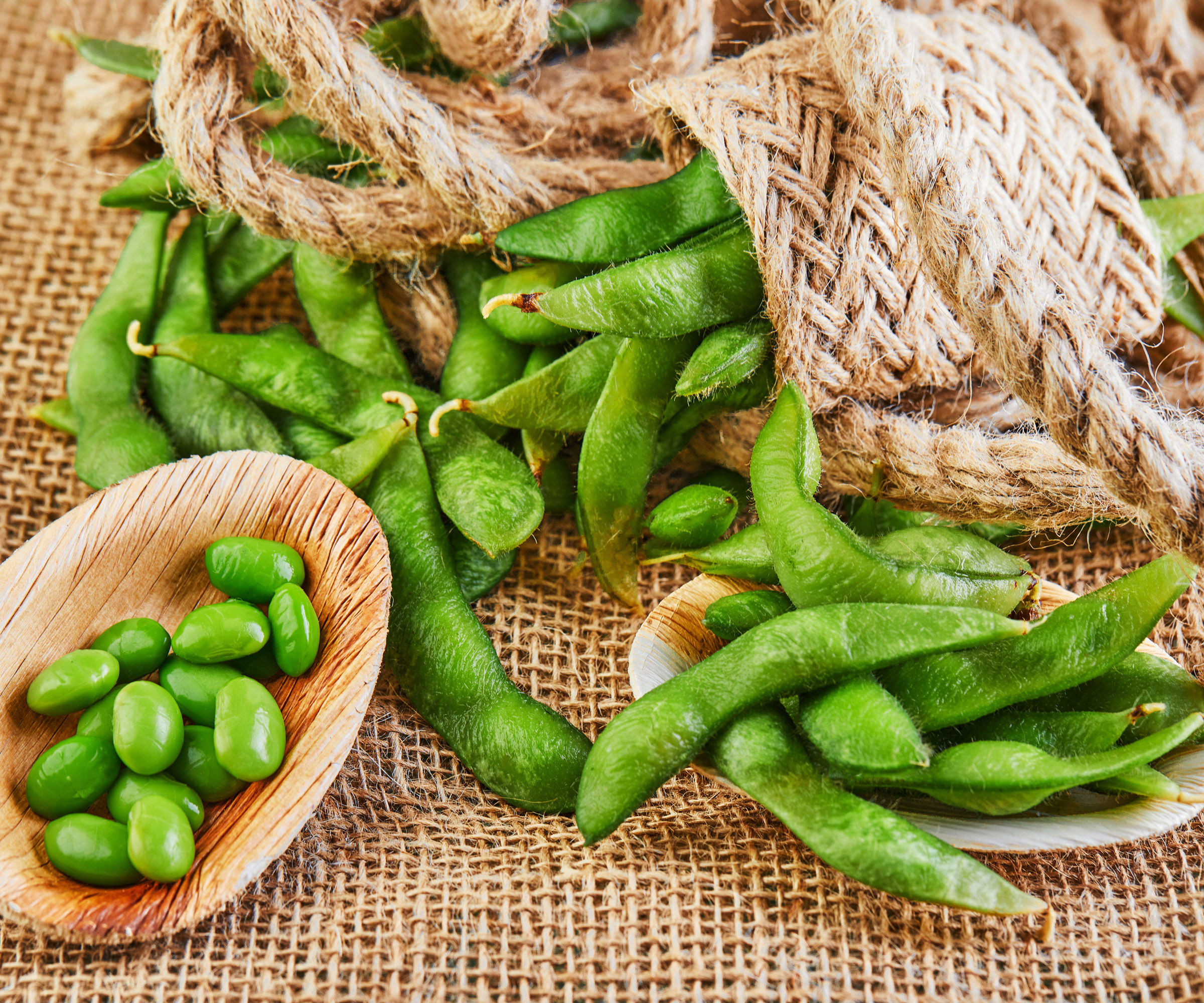
Soybean pods are ready to harvest once they are 2-3in long, ridged and bright green in color
FAQs
Can you grow soybeans in pots?
For enthusiastic bean-lovers looking for the best vegetables to grow in pots, soybeans are amongst the best crops you can try. Partly because they are relatively compact, these legumes are excellent for container gardening as long as you select the right size of pot, grow in a warm spot and keep a close eye on watering and pot position. Just allow around 12-15in depth for root systems to develop and make sure your container has adequate drainage holes. Alternatively, fabric growbags work well.
Choose the best potting compost you can find and aim to grow three plants per pot. If you sow more, thin so eventual seedlings are spaced 6in apart. Growing soybeans in pots, just bear in mind that they will need watering more frequently than if planted in the ground as the compost will dry out quicker. Also, try not to repot – sow into final containers so as to ensure their delicate root systems are disturbed as little as possible.
Can you eat soybean pods?
Eating soybean pods is not recommended, because the pods are tough. You will find the chewing required is in inverse proportion to any edible satisfaction to be gained – and what you try to swallow will likely cause digestive upsets.
Soybeans contain a fibrous plant material which cannot be fully broken down internally. Similarly, the pods of younger soybeans (known as edamame) are unpalatable, even after cooking. It is fine to boil or steam soybeans in their shells, as this can enhance the flavor of the beans, particularly if you are seasoning your beans. But if you grow soybeans, it is best to focus on the much tastier and far more nutritious pod contents: just make sure they are totally cooked before consumption.
Knowing how to grow soybeans presents you with a couple of options for eating, as you can either harvest the beans when mature or pick them young. Immature soybeans are known as ‘edamame’. Dished up as a Japanese delicacy, edamame makes a delicious additional edible treat.
Much like snap peas offer a tasty alternative to conventional peas, edamame is an inventive way to broaden your home-growing horizons. Just steam or boil for a few minutes in their pods, season with salt, and serve. ‘Squeeze the plump seeds out of their pods using your teeth and straight into your mouth – they’re the ultimate snack food,’ says Lucy Chamberlain.

A former assistant editor of Amateur Gardening magazine, Janey's gardening passion was fostered from an early age, when her amazing mum had her deadheading hydrangeas, mulching roses, and propagating strawberry plants from runners for school open days. She's also taken part in lots of conservation and rewilding projects for the RHS and TCV as a way of exploring her horticultural horizons.